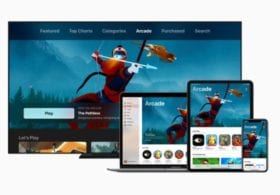

The streaming battle for eyeballs among big players like Disney, Netflix and Hulu is a big bucks competition – but how do smaller media companies and content providers compete for a piece of the expanding audience? Jonathan Laor, Founder and CEO of global tech company Applicaster, offers his insights.
What kinds of data strategies are smaller broadcasters and OTT brands employing to succeed in a changing landscape?
Smaller broadcasters and OTT brands can access the same functionalities and the same capabilities, on a certain level, as some of the bigger players. And considering the current circumstances in the world today, more are considering a data and device strategy designed to super-serve users; with more people watching and working from home and other untethered locations, publishers are looking to develop a scalable TV app strategy. While you can’t get to the Netflix level on a shoestring you definitely can walk in that direction and develop a toolkit that can grow along the way, even on smaller budgets. The direct-to-consumer media app playing field has leveled substantially in the past few years and it starts with strategically selecting tech partners and leveraging available data.
Native apps, and particularly mobile apps, are robust foundations for a data strategy. Here people come into the app and an anonymized token tells you that user X watched this, that, not that, but also that, in this order. This allows you to send push notifications to those users based on their preferences. It’s very easy to do. If you want to go a bit deeper, publishers can also leverage data from social logins. You may not own this user data, but you can correlate additional parameters because Facebook gives that information to you. And then of course the Holy grail is an independent user registration – which lets you get specific! To incentivize a user to log in, you can include premium or gated content, or sync with a newsletter.
Once you have a viewer’s email and some initial parameters, you can start building a profile that can be enriched by the viewer’s behavioral data to learn more about who they are and what they like. This helps to determine what kind of content to develop and offer on a high level, and segment the content for users in their apps to surface the content they’re most likely to enjoy and add value to their in-app experience. And automatically you’re able to better personalize advertising notifications, CRM initiatives and so forth.
What advancements have been made to improve viewer experience with apps?
First of all, I think that the entrance and the emergence of TV apps is a big trend here. Smart TVs, sticks like Roku, set-top boxes like Apple TV and providers are really becoming minded to continuous watching across devices. Having one account, it knows you; what you watch on your phone is what you’re going to see on your TV and that hasn’t always been that way. For the past two years, this has been prevalent. However, if we’re talking about the smaller channels that have non-linear smaller properties, not all of them have materialized these benefits of meeting the user everywhere they are.
Also, the move away from websites and into these native apps has seen a big shift in consumer benefit. Video players have become better. There are more features available like downloads and offline experiences. Publishers are realizing that they don’t need to create the coolest, newest, most different User Interface (UI), but rather create something that’s very clean, clear, easy to use. Netflix has been a great inspiration around that.
What improvements are viewers still looking for?
The discovery of content is still difficult. I think that broadcasters could be doing a better job profiling their users and targeting them with the right content and experience. When it is done today, it’s done very aggressively. So, if you watch two or three cooking shows, your whole Netflix is going to be covered with cooking shows. If you watch two episodes of The Crown, everything you’re going to see is going to be about the Royal Family. It’s almost an all or nothing situation. What that misses is that consumers also want to be surprised editorially, so I think that consumers are expecting that we get it right. That balance between editorial and recommendation is key. We want to be exposed both based on some editorial choice but also based on their own needs and values.
What is the key to understanding viewer preference?
It’s important to not only understand what users are watching, but how they are getting to that content, how they prefer to access their content, and what funnels users like to experience. It’s important to understand what UI works for every user (the opposite of personalization). We’ve found that the older people are better with a side menu versus younger people that want a tab bar. That’s a small example. If you look through an app, you find that these same users click big items again and again, and almost never small items. Those are interesting things to look at in terms of viewer preference. This is where we can apply machine learning. Using a plugin such as Talamoos as part of D2C media app’s tech stack allows you to analyze the activities that are happening on the app and then send back a very personalized response, which doesn’t only pertain to the content viewers are going to be exposed to, but also to the UI that they’re going to experience. Machine learning gives a personalized response to every individual user and so we aren’t making any generalizations. Instead we are building the UI that mathematically optimizes viewer consumption.
And in Conclusion…
For smaller broadcasters and OTT brands, starting with optimization before collecting data doesn’t make sense. You’re not going to go to step five of the data strategy before you finish step one. However, they can actually spend for step one today and later increase that spending to bring in the best-of-breed providers along the way as your business and audience grows.
You can start with Amazon Cognito as a database, use Google’s Firebase and Facebook Analytics and then bring on top of that a basic machine learning implementation like Talamoos as an inexpensive equation of partners. Next add components like Mixpanel or AppsFlyer and at the end of the day you’d have a stack comparable to Netflix but would probably still be less than 10% of the budget. But you’d be standing with a set of five to 10 tools that together comprise your complete data strategy that allows you to use best-of-breed instead of needing to develop everything in house.






